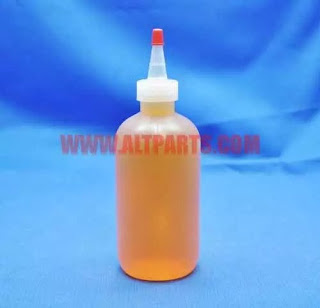The manufacturing industry has a long history of evolution. From products to tools and the working, everything has advanced. Like, we have CNC to help us carry out various activities effortlessly. The availability of Bystronic parts and Fanuc parts online to ensure the proper working of CNC, etc.
CNC has become so common that it's rare to see industries not using them.
Besides, adding CAD-CAM to CNC simplifies tasks and gets them done on time. It is way better than all the manual alternatives available today.
Here are the advantages of including CAD-CAM in your CNC toolkit.
1. Programming Potential
If you add CAD-CAM to your CNC toolkit, you can take on even the most challenging jobs. For instance, 3 axis machining jobs. It can help you create and manage toolpaths for jobs like molds, which are impossible to calculate manually or even via canned machine cycles. The CAD-CAM software will automate the entire process.
2. Control over Job Programming
Modern CAD-CAM software has CAD Tree functionality that allows job tracking. You can view all the commands and processes from beginning to end.
With it, you will have full control over processing - stock, work coordinates, material, tooling, operations, and output of NC programs. You can also save and load machining templates and copy and paste operations. Other benefits include reordering the job sequence, associating the toolpath to auto-update all the paths after the edit, etc.
With these capabilities, you can get the work done faster.
3. Accessible by Clients
With CAD-CAM, you can receive models faster than before. You can open the file, set the toolpath, and directly perform simulations. These simulations can then help you identify the processes and plan a quote, such as calculating cycle times.
You can deliver the products faster and at an affordable price than before. This software would allow you to design, manage projects, test, simulate, and deliver more quickly.
4. No Guesswork
Using CAD-CAM maximizes the programming efficiency. It removes the guesswork by making operators follow the steps in creating machine toolpaths. It ensures that the operator has set cutting depths, selected tools, chose toolpath style, managed lead-ins and outs, set compensation settings, and other essentials.
It allows programmers to be faster and handle the operations error-free even in case of high complexity.
5. High Speed
It provides high-speed machine toolpaths that reduce cycle time and ensures less wear and tear. Instead, it improves the quality of cutting by eliminating the traditional toolpaths' stop and go actions.
Its circular motion cutting makes the engagement with the material constant, deep, giving a sharp cut. Overall, it can improve productivity by 50 percent.
6. Less Wastage
CAD-CAM provides simulation that helps inspect processes and catch gouges and collisions before moving to the CNC machine. It alone helps eliminate costly mistakes and waste.
Simulations provide complete detail of the process. It helps visualize the process, such as cutting a metal sheet before the actual procedure.
7. Simple and Cost-Effective
Creating NC programs via 4 and 5 axis machining can be difficult. But CAD-CAM makes it easier. It provides a toolpath and special post-processing to index the 4th axis. It also allows operators to customize the posts for 4 and 5 axis machines.
You can also simulate the full 4 and 5 axes to inspect the machines before the NC program reaches the machines.
8. Seamless Integration
You can integrate CAM machining modules into your CAD software as a plugin. This would allow you to create machining for the part, simulate, and create NC programs. The best part is that you won't have to re-learn the entire CAD-CAM system. Besides, you would be able to provide better service and programming facilities. With basic training, you can start using the tool.
To Conclude
These advantages are enough to justify the importance of having CAD-CAM with your CNC toolkit. It will help you stay productive, competitive, and profitable.
Meanwhile, check out the Bystronic parts for CNC.


